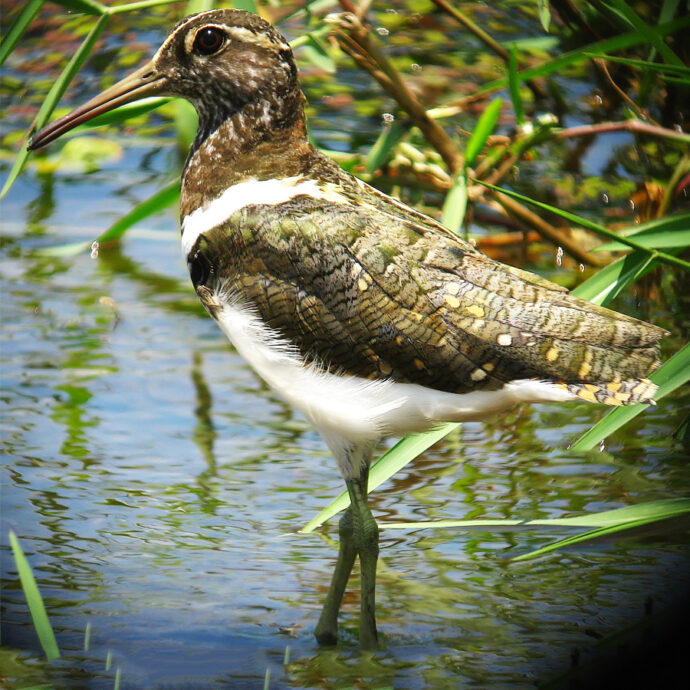Australian Painted Snipe
Species and status overview
The Australian painted snipe is a bird of the wetlands and marshes. They nest on the ground amongst tall vegetation, such as tussock grasses and reeds, often residing on islands. The nest is made of a scrape in the ground, lined with grass and leaves. After laying her eggs the female leaves the incubation and rearing of the young to the males while she breeds again, sometimes laying several clutches in a season.
When threatened, the painted snipe acts quickly. The birds may freeze, emit a loud hiss or buzz or make a threat display in which they raise their tails and extend both wings curved forwards to the ground. This makes them appear larger while also displaying their brightly coloured plumage.
The painted snipe is omnivorous, feeding on both the seeds of various wetland plants as well snails, worms and water beetles. They shelter during the day and emerge to feed at dusk.
The species has been recorded in the following locations, the lagoons area, Mackay, Walkerston, Glen Isla and Proserpine River.
Description
Beautifully coloured, the painted snipe is unlikely to be confused with other species.
Unlike most birds, the female is the more brightly coloured with a white crown stripe and eye patch and a chestnut and black hood. The female also displays a curved white collar. The remaining wings and body are patterned with black, green and grey plumage.
The male is smaller and duller in colour. He appears more grey, though features similar patterns to the female on the crown and collar and more intense spotting on the wings.
Conservation concerns
It is estimated that a population decline of more than 30% has occurred in the past 26 years (3 generations) (Garnett et al. 2011).
Known threats include
- Grazing and trampling by cattle of vegetation used for nesting, foraging and shelter
- Clearing of riparian vegetation for agriculture
- Wetland disturbance and reduced water quality (e.g. increased nutrients and salt content)
- Altered flooding regimes due to the manipulation of waterways
- Possible predation by feral animals (e.g. feral cats)
What can I do?
- Improve wetland health through revegetation or erect fencing to protect riparian habitat from trampling and grazing by cattle
- Keep cats indoors at night
- Ensure activities in and around wetland and riparian vegetation do not adversely affect water quality or hydrology
Photo credit Len Ezzy
